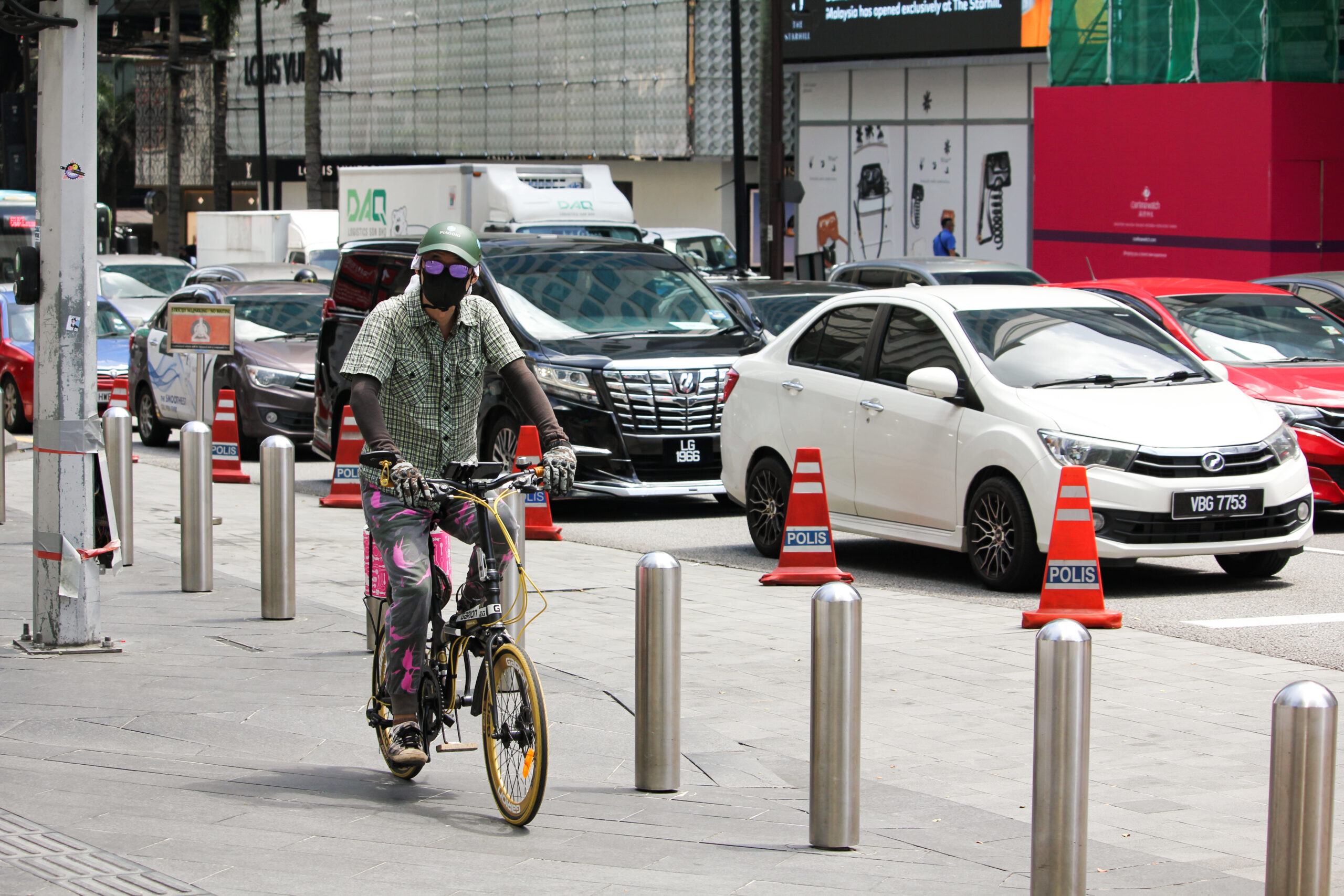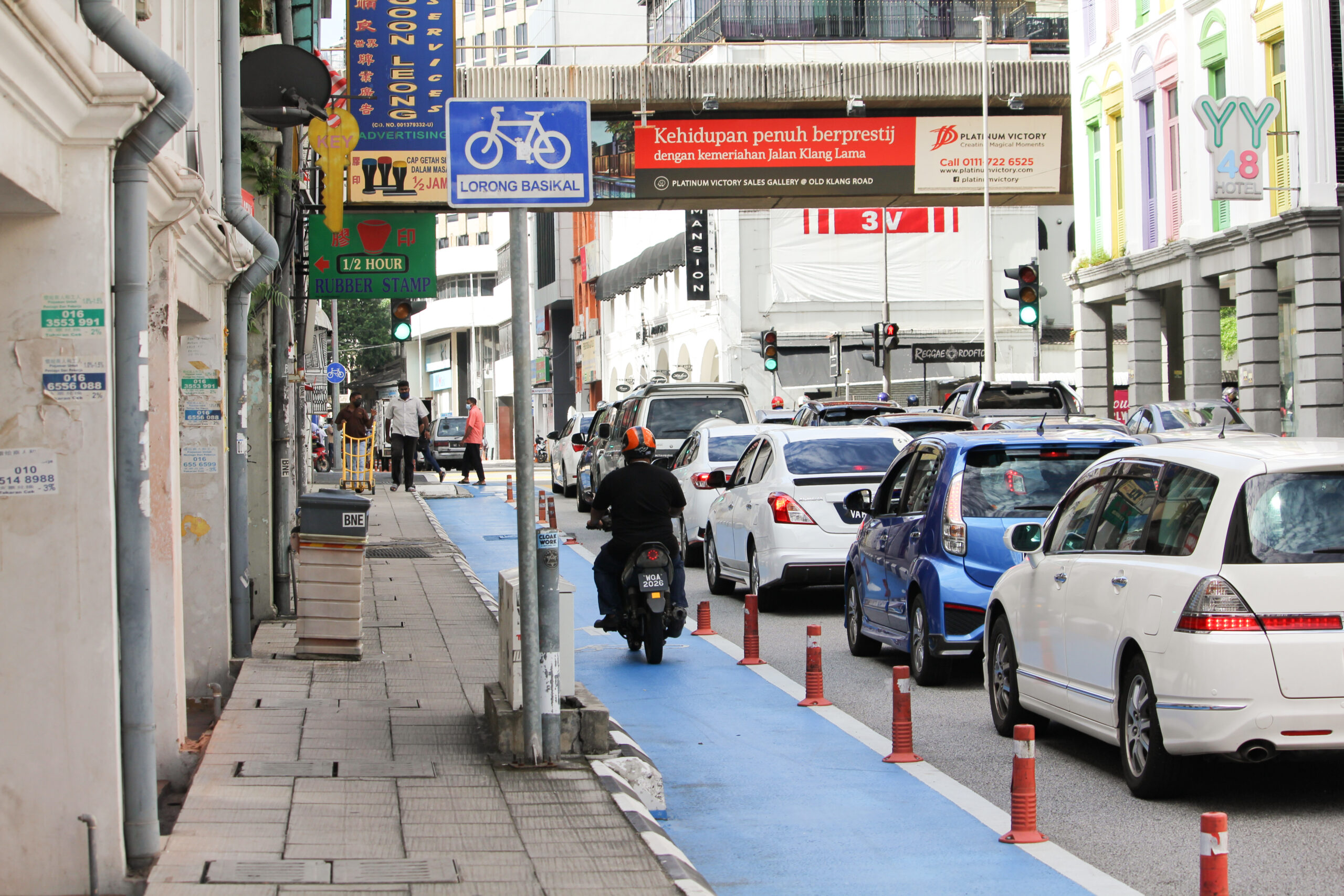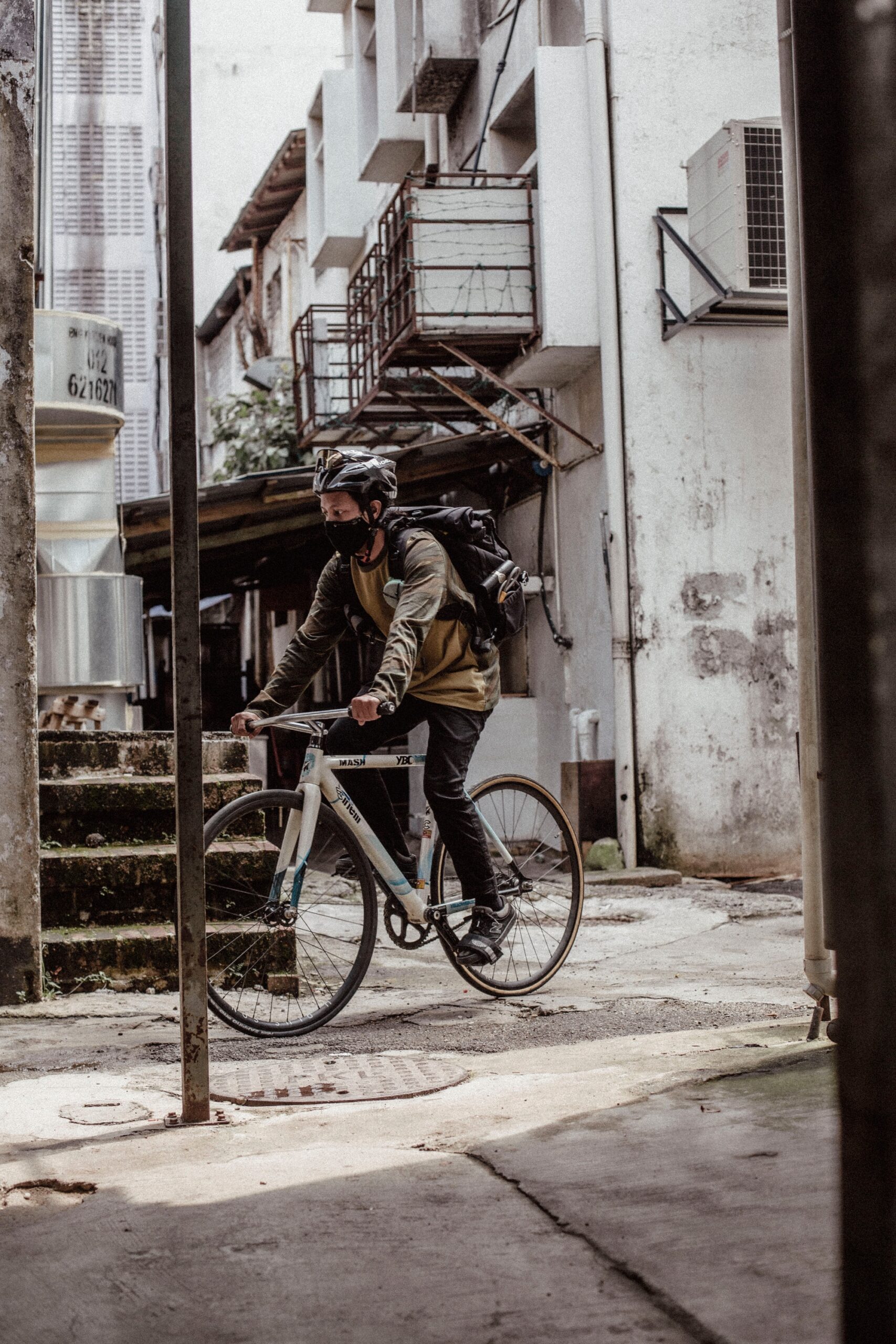The peak commuting hours in Kuala Lumpur start around 7am, when cars, trucks and motorcycles take to the congested roads. As bumper-to-bumper frustration brews, bicycle messengers like Mior Syahril seek opportunities to zoom through tight lanes in the standstill traffic.
“We just need a small space and a few seconds to get across,” said Mior, a messenger for VéloExpress.
Bike messenger services aren’t the first thing that comes to mind about Malaysia, which is not overly welcoming to bicycle riders. Although public transportation is abundant in Kuala Lumpur, the primary mode of travel in the growing concrete jungle is automobiles.
A lack of cycling infrastructure has prevented bike messengers from gaining traction as they have in other large cities. But in 2016, Jordi Arif bin Rahman, M. Farid Rahmat and Aedewan Adnan started VéloExpress, Malaysia’s only bicycle courier business. The trio took inspiration from the West, including Hollywood movies like “Premium Rush.”
Following the arrival of Covid-19, a general public withdrawal magnified Malaysia’s e-commerce market, which was estimated to grow 24.7% in 2020 and another 10.6% in 2021, according to industry analysis firm GlobalData. Based on that upward trajectory and an increased demand for couriers from those staying inside, a larger carbon footprint from conventional delivery services is a likely outcome.
The VéloExpress founders said they foresaw this trend, which enabled them to put their passion for cycling and environmental mindset to work. Moving around on two speedy wheels, cutting in and out of back alleys and taking shortcuts, the company’s four permanent and six part-time riders can make cost-efficient and climate-friendly deliveries.
In a market for courier services that is almost exclusively vehicular, VéloExpress is like coming up for fresh air after drowning in a sea of engine exhaust.

Once seen as the most efficient way to navigate the city, cycling has come to be regarded as a recreational activity in Kuala Lumpur. Cyclists are often perceived as a nuisance and the VéloExpress team face their fair share of challenges each day, from navigating poorly planned bicycle lanes to driver hostility.
Getting around on a bicycle requires extra caution, Mior said. Malaysian roads often force smaller vehicles to give way to bigger vehicles. This culture is inherently dangerous for cyclists, who only have their helmets for protection.
Mior said he believes the bigger the vehicle, the more responsibility their drivers have to watch out for others.
“The oversized vehicles like buses have to take the most responsibility on the road, because they take up much more space than us cycling,” he said. “As a bus driver, you carry more lives and responsibilities. To me, some are road bullies.”
When accidents involving bicycles occur, people are quick to blame the riders. The prevailing sentiment is that cyclists shouldn’t be allowed on the road.
A letter published in Malaysian media on 12 November following a fatal collision called for a cyclist ban on highways. The two authors, who identified themselves as National University of Malaysia representatives, claimed 56 cycling fatalities and 60 injuries in 2021 justified a ban to protect bike riders.
“Every job is dangerous. But for this job, it depends on how drivers react to you,” Mior said, recalling hostile encounters with car and bus drivers who tried to shoo him out of the way with their horns or squeeze him into tight corners.
“[Car drivers] think that because they pay road tax, they own the road. But that’s not true,” Mior said. “You’re not paying tax for the road, you pay tax for the car.”
A ban on bicycles is unlikely to solve the problem. Malaysia needs more public instruction about sharing the road and basic operator etiquette, Mior said.
“We have to use the road if we want to get to our destination, we can’t avoid it,” Mior said. “It’s all about education on how to use the road. That would be good for everyone.”

Chan Jer Ping, an urban cycling advocate, said that in the bike community there is a popular saying: “If you design the city for cars, then you’ll get a city full of cars.”
Designated bicycle lanes are marked by bright blue paint covering about 12 kilometers (7.4 miles) within central Kuala Lumpur’s high-traffic routes. In reality, the lanes are often misused by motorcyclists and larger vehicles or inhabited by roadside stalls. Cyclists also must frequently dismount to go around raised curbs.
“Bicycle lanes are created as an afterthought,” Chan said. “Wherever there is an extra space, they’ll just put a bike lane there with no regard for its accessibility.”
An increase in the challenges and dangers of biking is a consequence of major expressways carving the city into smaller neighbourhoods, which also create more congested bottlenecks.
If you design the city for cars, then you’ll get a city full of cars
“[Building highways] doesn’t solve anything,” Chan said. “We must look at the road usage more holistically. Building bigger roads will encourage more cars. By having more cars, you have made the congestion worse. Electric cars don’t solve the problem either.”
Chan described Malaysia’s approach to solving urban congestion as fundamentally flawed, suggesting that a shift in mindset is crucial: “They keep doing the same thing and it ends up with the same problems.”
Mior agrees. Creating safer bicycle connections between cities could encourage more people to commute by bicycles. “We need better city planning and to link one city to another city. That will make it much easier for cycling and my job,” he said.
Beyond urban issues, many view cycling as a way to help solve climate change.

At the outset of the Covid-19 pandemic, when only small cars were on the road and most people stayed at home, Mior noticed a stark difference in air quality. “The carbon [emissions] are all gone, and it’s happier and healthier for everyone. The air was so clear,” he said.
To coincide with the UN’s recent COP26 climate change summit in Glasgow, Scotland, Chan organised a cycling event on 6 November to amplify a message other cyclists have been voicing on social media: ‘This machine fights climate change.’
Many of the event’s 40 attendees in downtown Kuala Lumpur displayed flags and banners with messages urging an increase in bicycle use to slow rising global temperatures largely attributed to an overuse of automobiles powered by fossil fuels.
Malaysia made an ambitious promise at the Glasgow conference to reduce its carbon intensity 45% by 2030 and to achieve net-zero emissions by 2050. Yet the country seems to be leaving bicycles out of the solution, Chan said.
Mior has many years of cycling experience under his saddle, but he is still frustrated by exchanges with people who are accustomed to driving.
“They are like rusty nails,” he said, chuckling. “They can’t be polished, so I’m just going to focus on the younger generation and [educate] the community there.”
Mior acknowledged that while the city’s infrastructure is lacking in many ways, there are pockets of bicycle-friendly routes deserving recognition as convenient spaces for new cyclists to explore.
Encouraging more people to hop on bikes is the first step, but ultimately Mior said he believes Malaysians must move away from the notion that bicycles are only for recreation. They should be included among the nation’s transportation solutions.
“A bicycle is a vehicle. It’s not a hobby. It’s a mode of transportation to get from point A to point B,” he said. “Cycling is a lifestyle. It’s how I live. So how about we share the road instead?”


